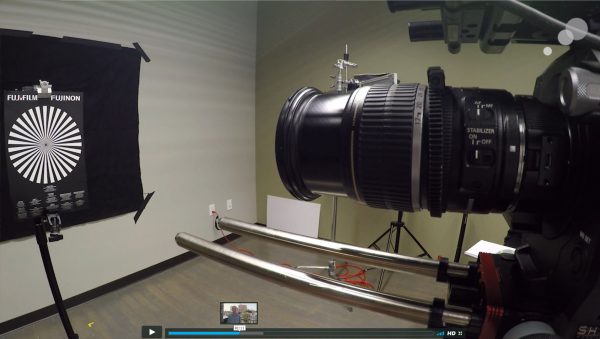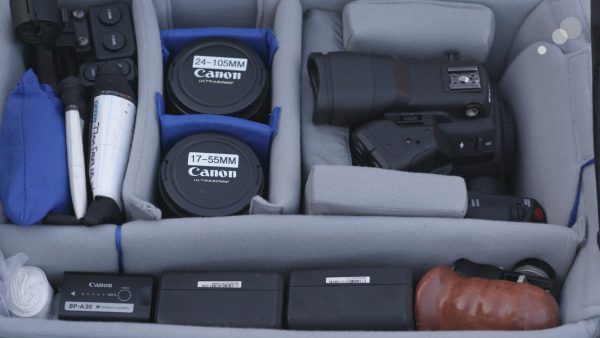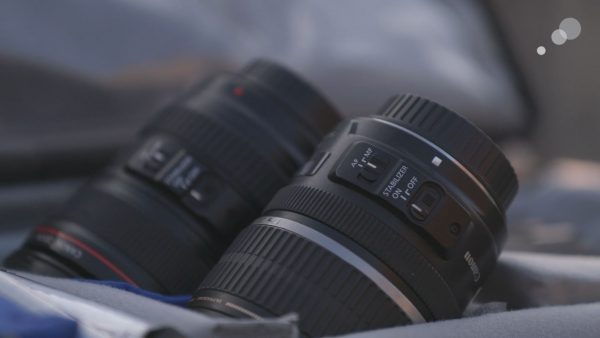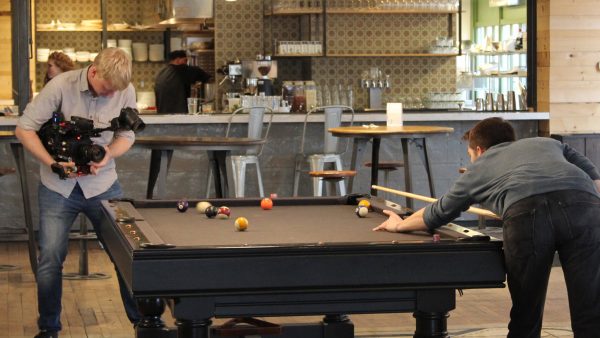I have to admit, Behind the Lens episode five is the one I’ve been looking forward to the most. Why? Well, Matt Porwoll has tested a few heavy hitters for his AbelCine series so far. And you can be pretty certain that a cine zoom lens costing upwards of $10,000 is going to offer you pretty good performance. But affordable stills lenses that were conceived before DSLR video was even a thing? Potentially much more interesting, especially as the 24-105 is a lens I find myself using (slightly reluctantly) an awful lot.
Repeat after me: These are not cine lenses

Matt doesn’t pull any punches in his evaluation: these lenses are mostly plastic. They’re not parfocal and they don’t have gears or witness marks.
They also don’t have a lot of weight, though. They’re the lightest lenses Matt tested for the series, and they pack down so small that you can fit a whole camera kit, including lenses and batteries, into the same size bag as you’d use for one or two cine zooms.

Perhaps you don’t always have the luxury of working with a camera assistant – maybe you’re shooting somewhere sensitive or just very cramped. That’s when these lenses come into their own.
IS + AF as standard
They both feature image stabilisation and autofocus, which combined with their small physical size can be useful for shooting in moving vehicles. They’re also both very sharp, a by-product of having been originally designed with high resolution stills in mind.

Despite a fairly large overlap in focal lengths, between the two lenses you’ve got a decent range that should see you right in a wide variety of shooting situations. Colours are relatively neutral (although Matt identifies a slight yellow push in the 24-105) and both render skintones naturally. They also both have a useful minimum focus distance.
Bumpy apertures, focus breathing
Being EF-mount stills lenses both the 17-55 and the 24-105 feature electronic-only aperture control, which aren’t stepless. So no smooth iris adjustments here. To get around this, Matt says he tends to set aperture to around f/4 and use a variable ND to control his exposure. A bonus here is the common filter size of 77mm across both lenses.

Both lenses also display lots of focus breathing. This is true across all focal lengths, although it’s less pronounced at the longer end of the 24-105.
Both lenses flare, although this is slightly better controlled in the 24-105, probably due to the different glass and coatings Canon use in their ‘L’-designated lenses.
Overall then, while using the 17-55 and 24-105 as a set comes with a lot of compromises when compared to a cine zoom, there’s also a lot to like. Not least the fact that they’re affordable to own as well as rent – but they’re also a great choice if you need a compact, low profile setup for your shoot.
More on Behind the Lens episode five
As ever there’s a lot more information on Matt’s blog post over on the AbelCine site. Do check it out, and if you’re hungry for more Behind the Lens, the other episodes in the series can be found here.
Have you used the 17-55 and 24-105 on a shoot? Could you? Would you? Let us know in the comments below…





